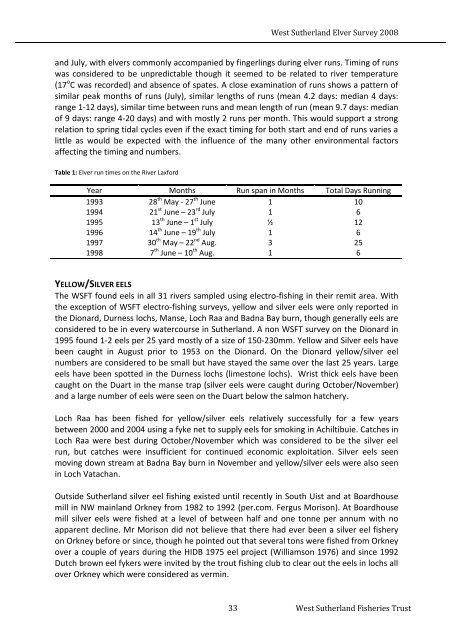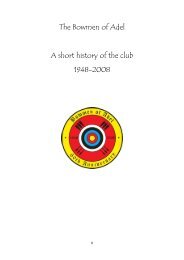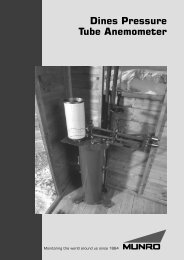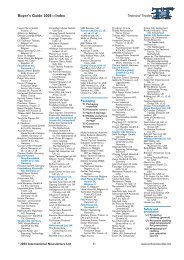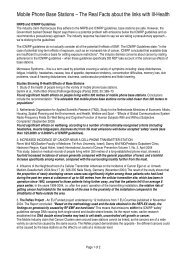West Sutherland Elver Survey
West Sutherland Elver Survey
West Sutherland Elver Survey
You also want an ePaper? Increase the reach of your titles
YUMPU automatically turns print PDFs into web optimized ePapers that Google loves.
<strong>West</strong> <strong>Sutherland</strong> <strong>Elver</strong> <strong>Survey</strong> 2008<br />
and July, with elvers commonly accompanied by fingerlings during elver runs. Timing of runs<br />
was considered to be unpredictable though it seemed to be related to river temperature<br />
(17 o C was recorded) and absence of spates. A close examination of runs shows a pattern of<br />
similar peak months of runs (July), similar lengths of runs (mean 4.2 days: median 4 days:<br />
range 1-12 days), similar time between runs and mean length of run (mean 9.7 days: median<br />
of 9 days: range 4-20 days) and with mostly 2 runs per month. This would support a strong<br />
relation to spring tidal cycles even if the exact timing for both start and end of runs varies a<br />
little as would be expected with the influence of the many other environmental factors<br />
affecting the timing and numbers.<br />
Table 1: <strong>Elver</strong> run times on the River Laxford<br />
Year Months Run span in Months Total Days Running<br />
1993 28 th May - 27 th June 1 10<br />
1994 21 st June – 23 rd July 1 6<br />
1995 13 th June – 1 st July ½ 12<br />
1996 14 th June – 19 th July 1 6<br />
1997 30 th May – 22 nd Aug. 3 25<br />
1998 7 th June – 10 th Aug. 1 6<br />
YELLOW/SILVER EELS<br />
The WSFT found eels in all 31 rivers sampled using electro-fishing in their remit area. With<br />
the exception of WSFT electro-fishing surveys, yellow and silver eels were only reported in<br />
the Dionard, Durness lochs, Manse, Loch Raa and Badna Bay burn, though generally eels are<br />
considered to be in every watercourse in <strong>Sutherland</strong>. A non WSFT survey on the Dionard in<br />
1995 found 1-2 eels per 25 yard mostly of a size of 150-230mm. Yellow and Silver eels have<br />
been caught in August prior to 1953 on the Dionard. On the Dionard yellow/silver eel<br />
numbers are considered to be small but have stayed the same over the last 25 years. Large<br />
eels have been spotted in the Durness lochs (limestone lochs). Wrist thick eels have been<br />
caught on the Duart in the manse trap (silver eels were caught during October/November)<br />
and a large number of eels were seen on the Duart below the salmon hatchery.<br />
Loch Raa has been fished for yellow/silver eels relatively successfully for a few years<br />
between 2000 and 2004 using a fyke net to supply eels for smoking in Achiltibuie. Catches in<br />
Loch Raa were best during October/November which was considered to be the silver eel<br />
run, but catches were insufficient for continued economic exploitation. Silver eels seen<br />
moving down stream at Badna Bay burn in November and yellow/silver eels were also seen<br />
in Loch Vatachan.<br />
Outside <strong>Sutherland</strong> silver eel fishing existed until recently in South Uist and at Boardhouse<br />
mill in NW mainland Orkney from 1982 to 1992 (per.com. Fergus Morison). At Boardhouse<br />
mill silver eels were fished at a level of between half and one tonne per annum with no<br />
apparent decline. Mr Morison did not believe that there had ever been a silver eel fishery<br />
on Orkney before or since, though he pointed out that several tons were fished from Orkney<br />
over a couple of years during the HIDB 1975 eel project (Williamson 1976) and since 1992<br />
Dutch brown eel fykers were invited by the trout fishing club to clear out the eels in lochs all<br />
over Orkney which were considered as vermin.<br />
33 <strong>West</strong> <strong>Sutherland</strong> Fisheries Trust


